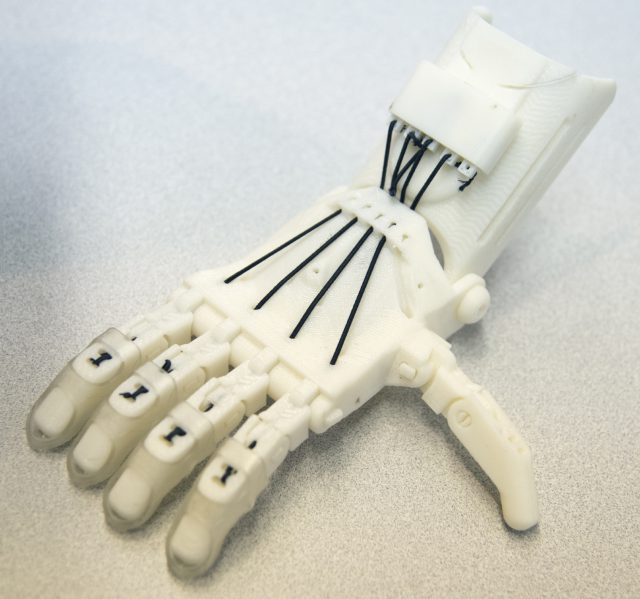By Michael Foster-Sanders/campus editor
Artists are closer to turning their imaginations into reality with the world of 3-D printing.
Jewelry, shoes and orthodontics are being manufactured using the cutting-edge technology. And 3-D printers and scanners are making the workflow easier.
Jeff Opel is an instructor for the CIE Solid Model to 3-D printing program on NE Campus and sponsor of the 3-D Makers Club. He said he hopes to educate people about the technology’s potential.
“We’re on the ground level raising awareness right now with 3-D printing on campus,” he said. “People are like ‘Oh, wow, that’s 3-D printing, and we’re starting to open people’s eyes to what it is.”
Opel talked about TCC making the program accredited so students can get degrees.
“In the future, we’re going to have full-blown undergrad classes,” he said. “The program is so new we don’t have credit classes yet. I have to write curriculum for the classes.”
Robert Jensen, a CIE student in NE’s 3-D printing program, said he enjoys the class and the way Opel teaches.
“I like the format and the way you learn in class, because it’s hands on,” he said. “The class is not straight lectures as an algebra class would be. You don’t learn anything until you use it, so the lab format is very useful.”
According to an article in Forbes magazine, 3-D printing jobs are on the rise. And Opel said the technology is opening up new jobs.
“You have companies popping up out of nowhere manufacturing printers since the patent on 3-D printing expired,” he said. “People are starting new businesses writing 3-D software, making accessories for 3-D printers. We’re seeing a lot of business opportunities within that area from the core of making the printers to selling online merchandise.”

Photo by Gabrielle Saleh/The Collegian
3-D printing requires lots of space and ventilation due to the machine’s sizes and the fumes dispersed when lasers cut into the materials during manufacturing of a project, Opel said.
Among other things, the lab has created a makeshift ventilation system with fans to stop the fumes from becoming overwhelming and lingering in the air. Opel said the program needs a bigger space with a centralized location for all the 3-D printers on campus with a qualified technician present.
“The lab is at max capacity. Printers are popping up in other locations on campus, but there is no one to go out and maintain them. And I think that is wrong,” he said. “I think the printers should be in a centralized location for someone to be there like myself, and a lab manager can maintain them so the students and instructors can come to that central area. There were talks about the lab getting a bigger building, but I don’t know where that went, but we need a large cavernous facility because there are fumes and odors from burning plastic.”
The lab had to move some of the printers to the Haltom City Northeast Center due to lack of space. The printers are just sitting there because Opel doesn’t go to that location much. He said the lab also needs tools such as drills and sanders.
The 3-D Makers Club meets on Tuesdays and Thursdays to work on personal projects or projects assigned to them. The club has worked on creating 3-D printed chessboards, pens and phone cases.
The only rule to join the club is that members have to be students on campus.
Connor Reyes, president of the 3-D Makers Club, said the club allows him to experience the printing technology that he would otherwise not have access to.
“3-D printing is definitely on the rise, and I enjoy the club,” he said.
Opel said the club landed one of its members a job in the automotive field.
“A student got a high-paying job just by being affiliated with the club,” Opel said. “We support him, and he brings his work projects to the club. If he feels overwhelmed, the club is there to prop him up.”

